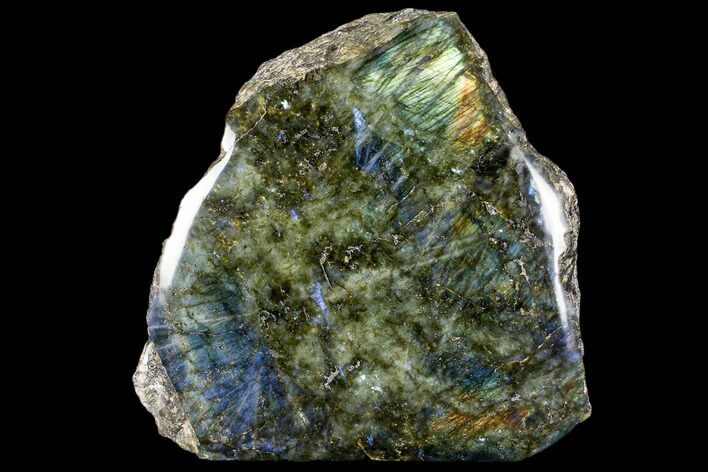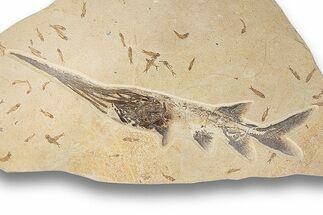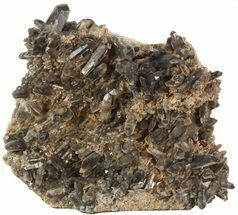This Specimen has been sold.
12.1" Wide, Polished Labradorite Section (37 lbs) - Madagascar
This is a very large, beautiful labradorite specimen with one face polished, collected from Madagascar. The brilliant blue/green/orange colors have a lot of play in the light, giving the piece an entirely different personality when viewed in different angles and lighting. This labradorite specimen also contains a section of purple labradorescence along what could be considered the bottom right corner of the polished face.
The base of this large labradorite section has been cut flat, allowing for stable, aesthetic presentation without the need for a display stand. The entire specimen measures 12.1 x 11.6 x 5.5".
The base of this large labradorite section has been cut flat, allowing for stable, aesthetic presentation without the need for a display stand. The entire specimen measures 12.1 x 11.6 x 5.5".
About Labradorite
Labradorite is a feldspar mineral most often found in mafic igneous rocks. Some specimens of labradorite exhibit what is called a "Schiller effect"; a strong play of iridescent blue, green, red, orange, and yellow colors. Labradorite is so well known for these spectacular displays of color that the phenomenon is also known as labradorescence. Specimens with high quality labradorescence are often polished and used as gemstones.
The labradorescence is not caused by the colors breflecting on the surface of the specimen. Instead, light enters the stone, hits a twinning crystal lattice surface within the stone, and reflects from that. The color seen is the color of light reflected from that twinning surface. Different twinning surfaces within the stone reflect different colors of light. Light reflecting from different twinning surfaces in various parts of the stone can give the stone a multi-colored appearance.
Labradorite is named after Labrador, Canada, where it was first found. Today, the most prolific deposits for most commercially available labradorite occur in Madagascar and Russia.
Labradorite is a feldspar mineral most often found in mafic igneous rocks. Some specimens of labradorite exhibit what is called a "Schiller effect"; a strong play of iridescent blue, green, red, orange, and yellow colors. Labradorite is so well known for these spectacular displays of color that the phenomenon is also known as labradorescence. Specimens with high quality labradorescence are often polished and used as gemstones.
The labradorescence is not caused by the colors breflecting on the surface of the specimen. Instead, light enters the stone, hits a twinning crystal lattice surface within the stone, and reflects from that. The color seen is the color of light reflected from that twinning surface. Different twinning surfaces within the stone reflect different colors of light. Light reflecting from different twinning surfaces in various parts of the stone can give the stone a multi-colored appearance.
Labradorite is named after Labrador, Canada, where it was first found. Today, the most prolific deposits for most commercially available labradorite occur in Madagascar and Russia.
SPECIES
Labradorite
LOCATION
Madagascar
SIZE
12.1 x 11.6 x 5.5". Weighs 37.5 lbs
CATEGORY
ITEM
#103726
 Reviews
Reviews



















